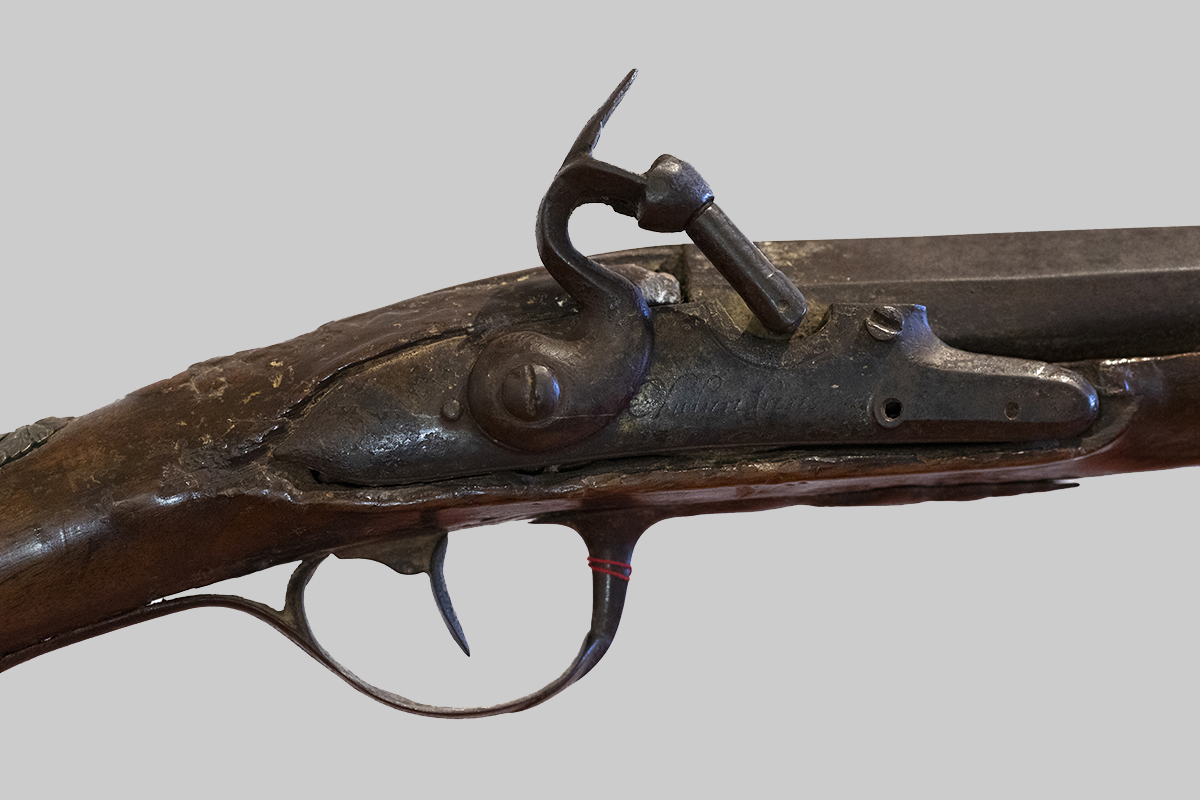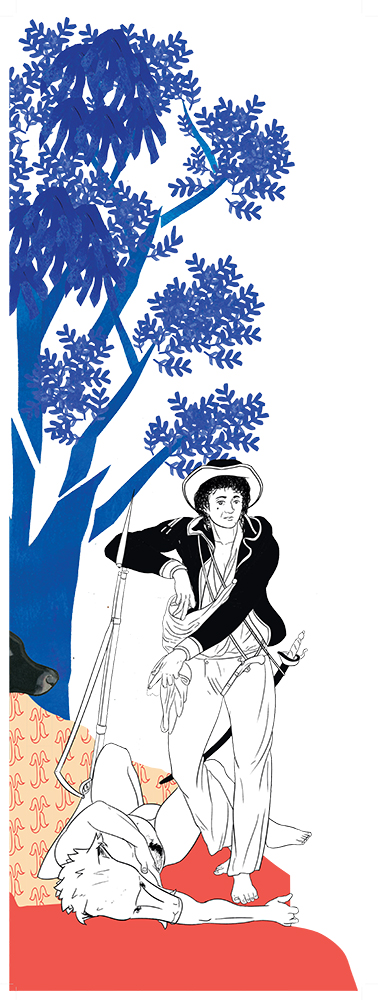10th May 2024. For the 19th national slavery, slave-trade and abolition commemoration day, in partnership with the Foundation for the memory of slavery, the Villèle historical museum is focusing on “Mussard’s shotgun”.

Collection of Villèle historical museum, inv. 1989.184
The weapon is considered to have been the famous shotgun given by the French king Louis XV as a gift to François Mussard, a famous slave-hunter on Bourbon island, to thank him for services rendered. To encourage slave hunters to track down fugitive slaves, the French East India Company would often grant prestigious gifts on behalf of the King of France.
In 1754, François Mussard, the most famous hunter of ‘maroon’ slaves and head of a detachment, was given a rifle and a couple of pistols decorated with silver and bearing the crest of the East India Company, as a sign of their gratitude towards him.

In the 18th century, the flintlock mechanism of weapons made shooting operations rather complicated and only the most skilled hunters were able to shoot and recharge their weapons several times, while at the same time running after fugitive slaves.
When this rifle was examined, it appeared that it was fired not using a flintlock, but a more recent ‘percussion’ cartridge system, invented in 1807 (date the patent was registered): the hammer would hit a cartridge containing mercury fulminate, the first contact reacting to the impact.

However, it can clearly be seen here that the lock was designed to accommodate a flint structure (with holes at the front) and that the pan was cut out for a barrel to be set up in its place. This modification, carried out after cartridge locks were invented and, like a large number of early 19th century weapons which continued to be used afterwards, does not call into question the dating of the shotgun and its links to its former owner.
“Shotgun belonging to Mussard, object of memory”
Exhibition on the first floor of the Villèle museum, until 20th December 2024.
“Used for killing animals, the shotgun was initially a hunting tool, later, through the massacre of slaves during that period, becoming an ‘object of memory’.
In 2023, in the context of the la classe, l’oeuvre! (a class, a work!) project, François Mussard’s shotgun was taken as the starting point for a project carried out by pupils of the François de Mahy professional high school in Saint-Pierre (Reunion).
During European Museum Night, the year 12 pupils studying for the Visual Communication and Multi-media Professional Diploma presented a graphic interpretation of the shotgun, a heritage object, on the first floor of the museum.
They designed and created a mural, focusing on the confusion between man and animal, prey and slave, creating chimeras. They also depicted the crops the slaves worked on as from the 17th century, such as cotton, coffee and sugar cane.

SELF-PORTRAIT OF FRANÇOIS MUSSARD
Composed by a pupil of the François de Mahy high school
I am referred to solely as Mussard, my patronymic, while François, my first name, merely provokes even greater fear. The son of a settler, I was born in Argenteuil on 25th November 1718.
I am the famous hunter of runaway slaves on Bourbon island. I have been given credit for “cleansing” virtually the whole area of the island’s cirques of their runaway slave encampments and legend has it that I have personally taken on the task of putting to death their prominent chiefs, including Mafate and Cimendef. From the 18th century on, slaves began to escape their masters’ estates, taking refuge in the island’s mountains and setting up true encampments. Very often however, they need to come down to the coastal areas to steal animals, weapons and even take women slaves. Infuriated by these untimely attacks, estate owners offer large sums of money as a reward for seeking out and killing them. With my men, I organise highly effective punitive expeditions to track them down. I am not the island’s only slave-hunter, but my men and I are reputed for our tenacity. They call my ‘the relentless one’ and they say that I have the pernicious ability to reload my shotgun while continuing to run. I organised my militia without awaiting official orders to do so, and have thus become one of the most hardened at the task. From 1744, I will receive official payment for my work.
In 1754 the East India Company rewarded me with a magnificent shotgun, as well as two pistols with silver butts.
When a fugitive is taken alive, I am ruthless, applying article 38 of the Reunion edition of the 1724 Black Code.
A first offender is whipped, has one ear cut off and is tattooed with a fleur-de-lis. For a second offender, a second fleur-de-lis and his Achilles tendon is severed. A third-time offender is punished by hanging or the wheel.
“Mountain explorer”, my name has been given to several remarkable geographical sites, such as the la caverne Mussard (Mussard’s cave), at the heart of the Piton des Neiges mountain, an altitude of about 2,150 metres.









